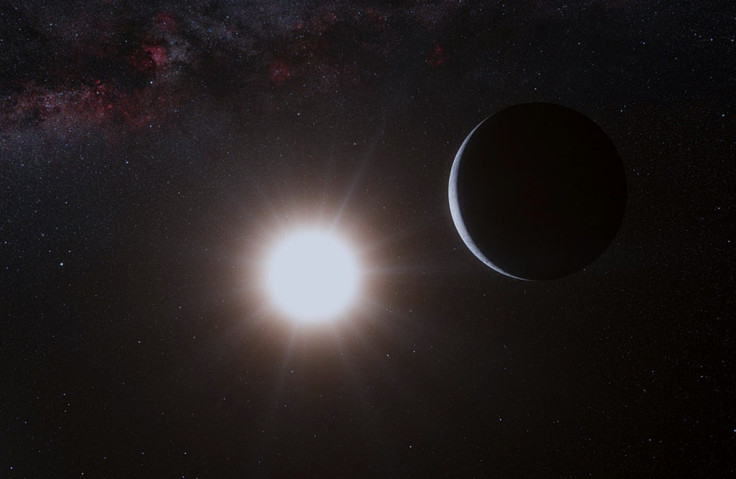“Another Earth” Discovered Orbiting Our Neighbor Sun-Like Star

Astronomers have discovered what may be habitable Earth-like planet just 12 light years away.
Scientists say the Earth-like planet is one of the five planets orbiting Tau Ceti, the closest single star beyond our solar system, with a temperature and luminosity that is almost identical to our sun.
Astronomers believe that one of the five planets circling Tau Ceti is at the perfect distance from the star to have temperatures that are neither too hot nor too cold, oceans of liquid water and even life, according to a study published in the journal Astronomy & Astrophysics.
Using a highly sensitive technique that pooled data from more than 6,000 observations from three different telescopes and the radial velocity method that looks for changes in a star's movement caused by the gravitational tug of the planets, researcher Mikko Tuomi of the University of Hertfordshire in the United Kingdom and his colleagues found that the slight movements of the Tau Ceti suggest that the star may be surrounded by five planets that are only about two to seven times bigger than our Earth.
If latest discoveries of the astronomers are confirmed that would mean that all five of the planets circling around Tau Ceti are positioned closer to their "sun" than Mars is to Earth.
However, because Tau Ceti is believed to emit only 45 percent as much light as the sun, each planet gets less warmth from their star than a planet would at the same distance from our sun, according to Science Magazine.
The three planets closest to Tau Ceti, deemed b, c, and d, are probably too hot to support life. They lie so close to the sun that planet b takes 14 days, planet c takes 35 days and d takes 94 days to make a complete orbit.
However, scientists believe that the fourth closet planet to Tau Ceti, planet e, may sustain life, even though it takes only 168 days to make a complete orbit and is about four times larger than Earth.
The fifth and farthest planet from Tau Ceti, planet f, makes a complete orbit every 640 days, according to the study.
"This discovery is in keeping with our emerging view that virtually every star has planets, and that the galaxy must have many such potentially habitable Earth-sized planets," Professor Steve Vogt, a researcher from the University of California, said in a statement.
"They are everywhere, even right next door," he added.
Astronomers have so far discovered more than 800 planets orbiting stars beyond the sun, but research has mainly focused on planets orbiting sun-like stars that are closest to our galaxy.
"Tau Ceti is one of our nearest cosmic neighbours and so bright that we may be able to study the atmospheres of these planets in the not-too-distant future," Dr. James Jenkins of the University of Hertfordshire said in a statement. "Planetary systems found around nearby stars close to our sun indicate that these systems are common in our Milky Way galaxy."
"As we stare at the night sky, it is worth contemplating that there may well be more planets out there than there are stars, some fraction of which may well be habitable," added Professor Chris Tinney, from the University of New South Wales.
Published by Medicaldaily.com



























